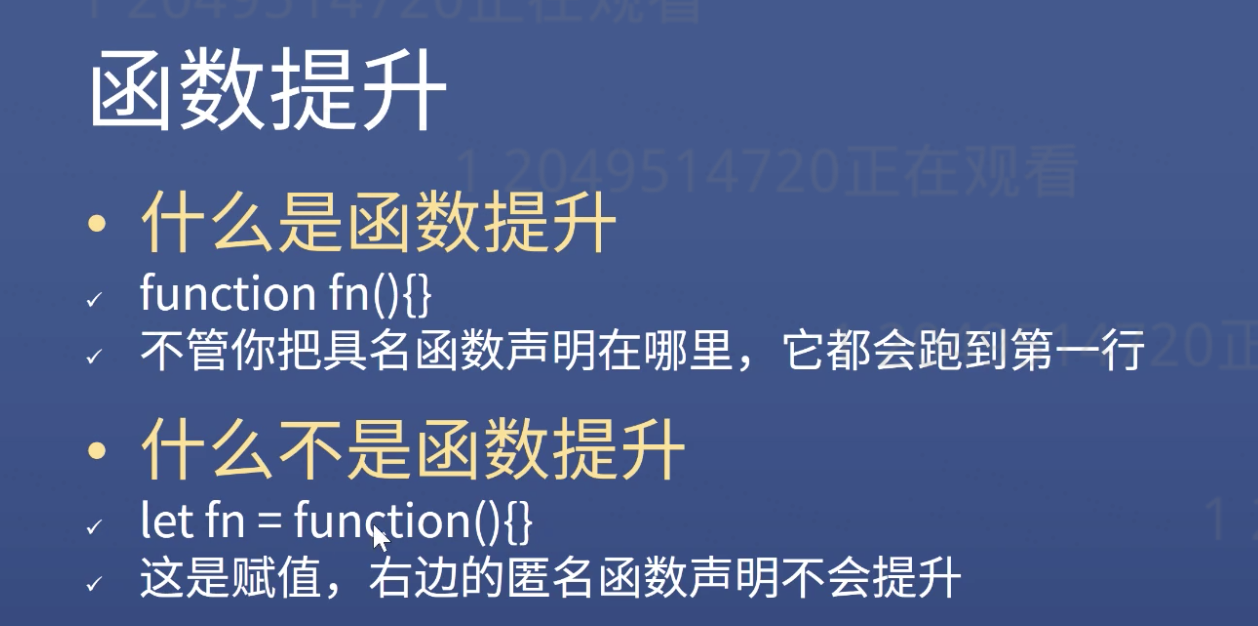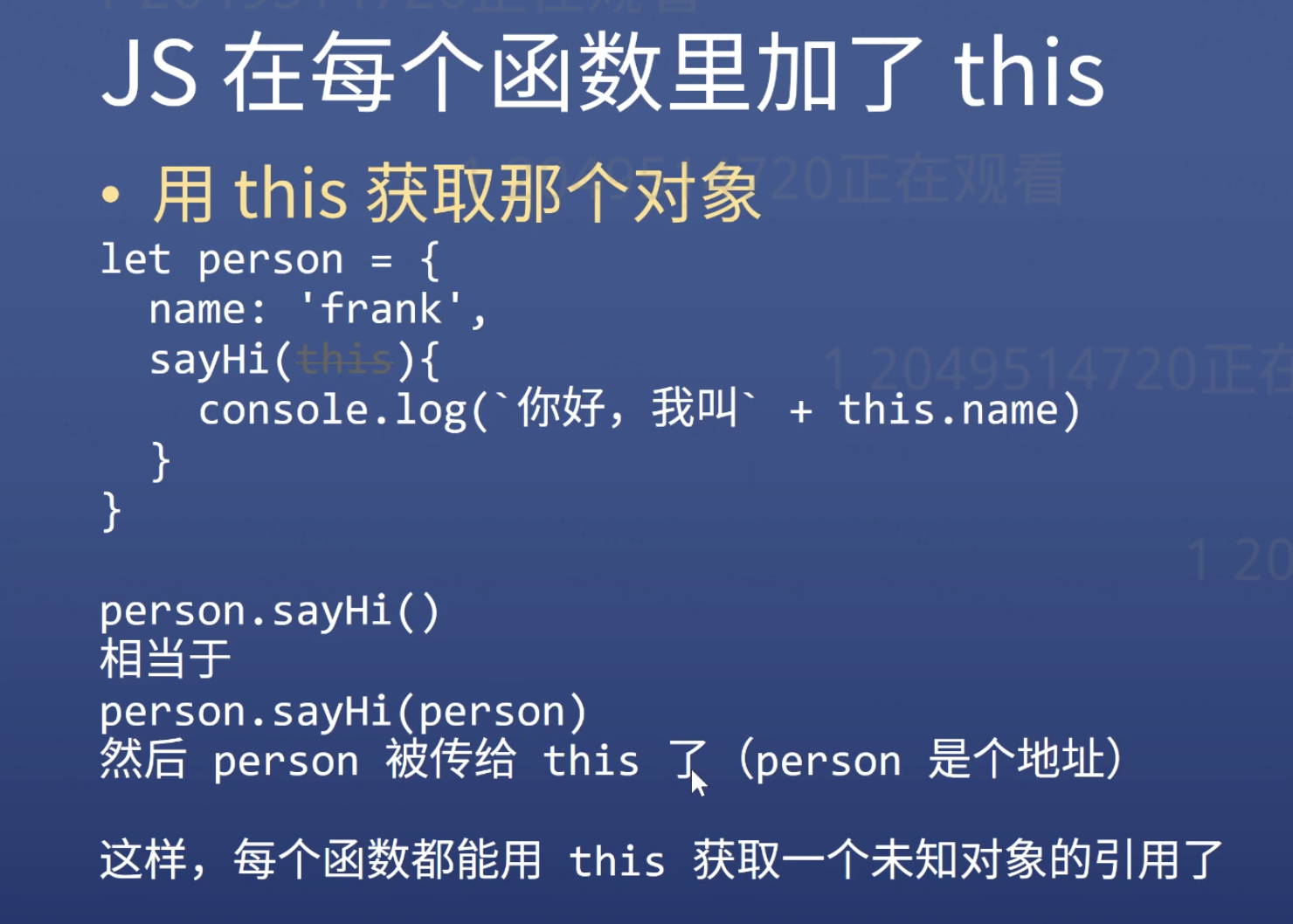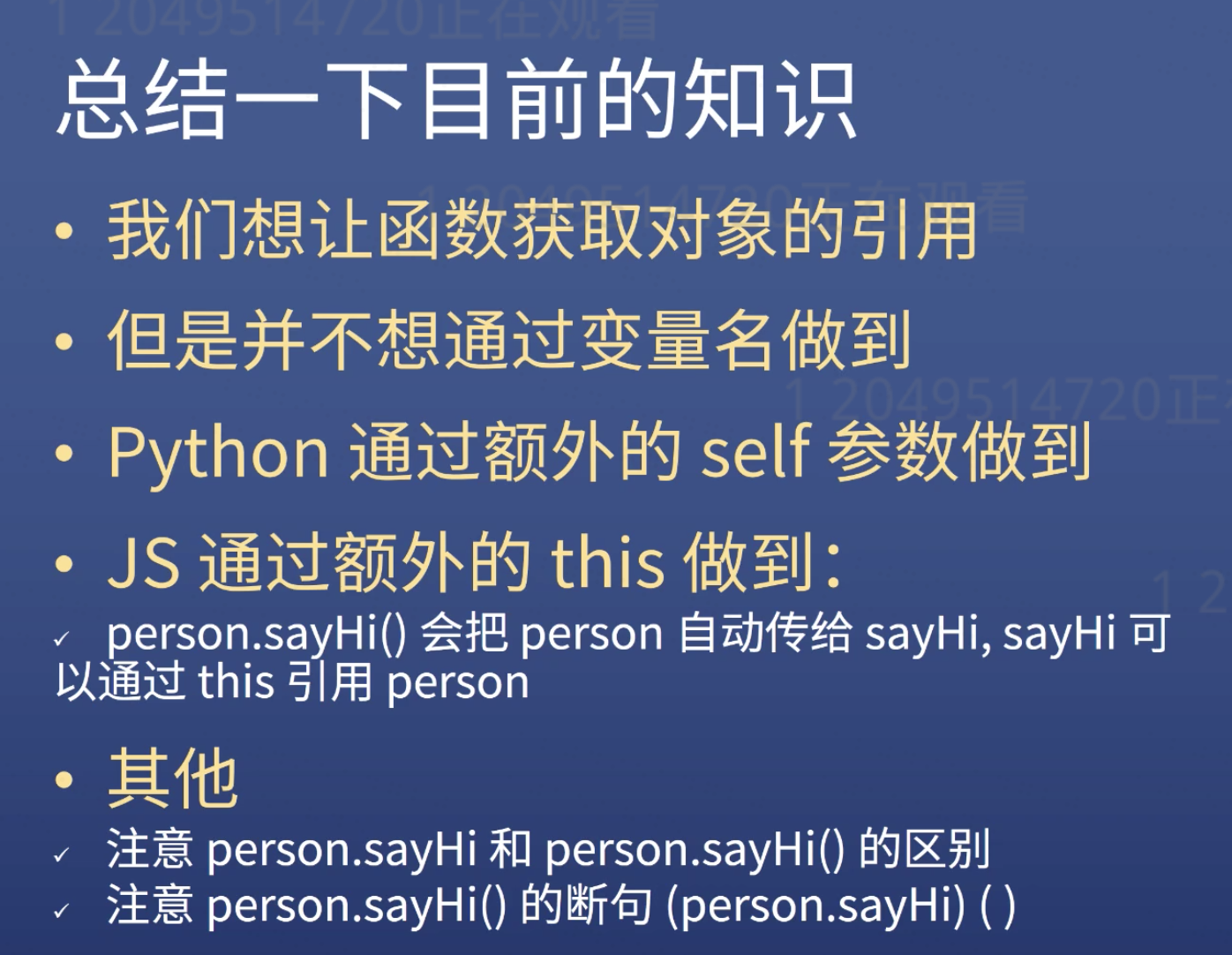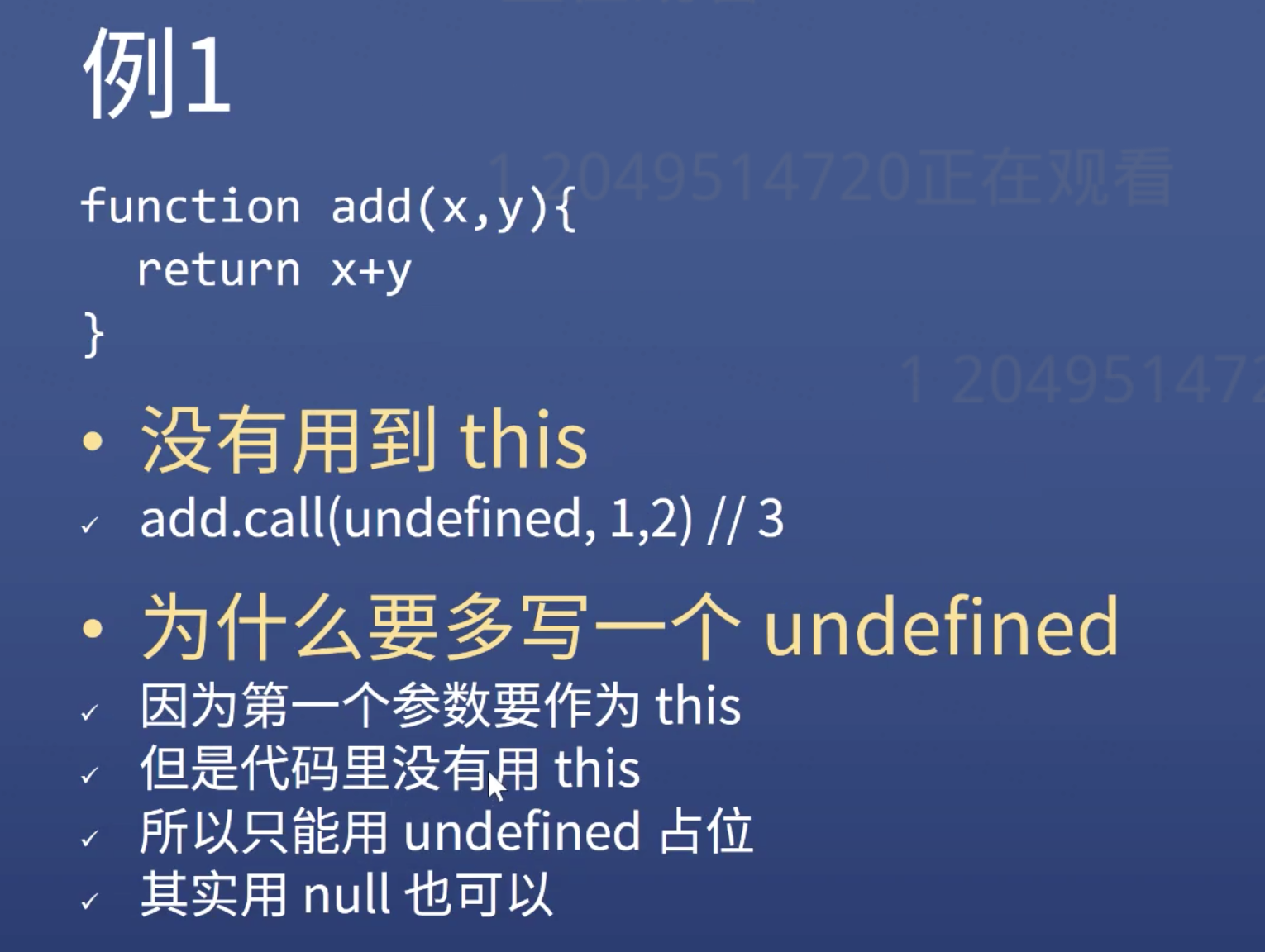Key concepts about function
- Call time
- Scope
- Closure
- Parameter
- Return value
- Call Stack
- Hoisting
- Arguments (except arrow function)
- This




function fn(){
console.log(this)
}
// if you don't give any condition to the function, 'this' will point to the 'window'
if you don’t give any condition to the function, ‘this’ will point to the ‘window’
We must use:
let person = {name:'frank',
sayHi(){
console.log(this.name)
}
}
person.sayHi.call(person)

function add(x, y){
return x + y
}
add.call(undefined, 1,2)
// first value used to occupy the position
Arrow Function
- Regular function ‘this’ refers parent, left of the dot
- Arrow function refers to it’s current surrounding scope
// regular function const bob = { firstName: "bob", lastName: "smith", sayName: function() { const self = this setTimeout(function() { console.log(`Hello, my name is ${self.firstName} ${self.lastName}`); }) } } bob.sayName() //result: Hello, my name is bob smith
// arrow function
const bob1 = {
firstName: "bob",
lastName: "smith",
sayName: function() {
setTimeout(()=> {
console.log(`Hello, my name is ${this.firstName} ${this.lastName}`);
})
}
}
bob1.sayName()
// Hello, my name is bob smith
Arrow Function Hoisting
// sayHi() is a normal function
sayHi()
const john = 'john'
const peter = 'Peter'
function sayHi(person = "Susan"){
console.log(`Hi ${person}`)
}
// this is an arrow function, but called before it initialized
sayHello()
const sayHello = (person = "Bob") => console.log(`Hello ${person}`)
Array Destructing
// Array destructing
const friends = ['john', 'peter', 'bob', 'alice']
const [a, b, x] = friends
console.log(a, b, x);
Object Destructing
// Object destructing
const bob = {
first: 'bob',
last: 'sanders',
city: 'chicago',
siblings: {
sister: 'jane'
},
}
const {
first: firstName,
last,
city,
zip,
hop,
siblings: {sister: favoriteSibling},
} = bob;
console.log(firstName, last, city, hop,favoriteSibling)
Static Scoping VS Dynamic Scoping
function fn1(){
function fn2(){
console.log(a)
}
// when the fn2 function has a parameter, the final result will be 4
// function fn2(a){
// console.log(a)
// }
function fn3(){
var a = 4
fn2()
}
var a = 2
return fn3
}
var fn = fn1()
fn() // result: 2
Answer:
静态作用域,看定义的位置,跟在哪调用无关, fn2中没有a,就会去它定义的上一层中找,就是fn1中, 跟在哪调用无关,因为JS是静态作用域的,只看它在何处定义的.
我的想法是动态作用域的想法,会在运行时沿着调用链查找;但是JS规定的是静态作用域,一个变量定义的那一刻,作用域就已经确定了,跟调用毛关系没有